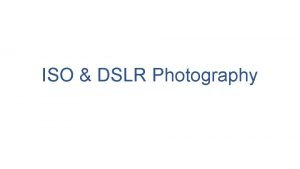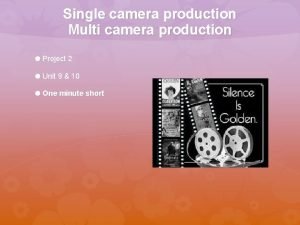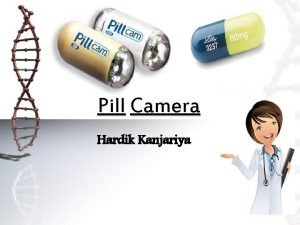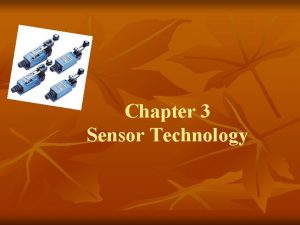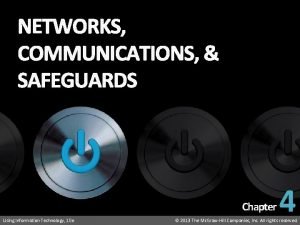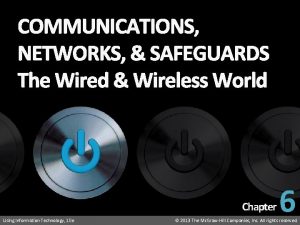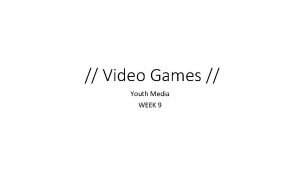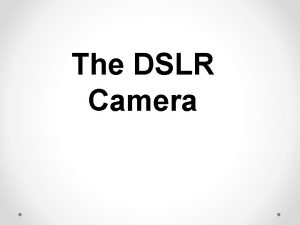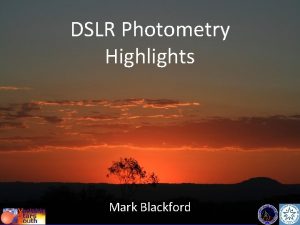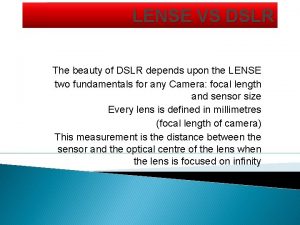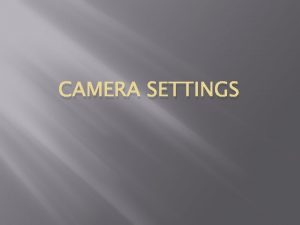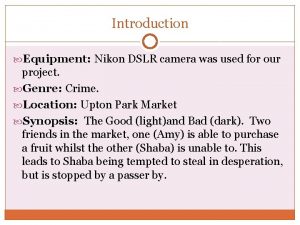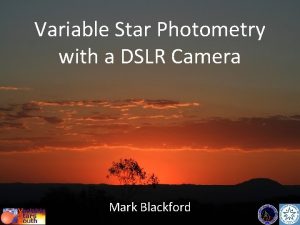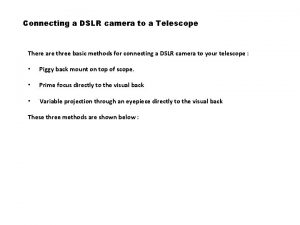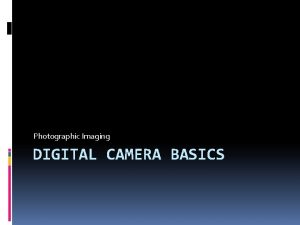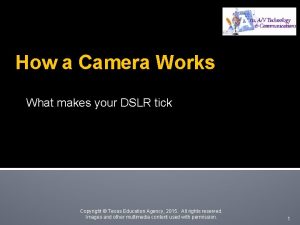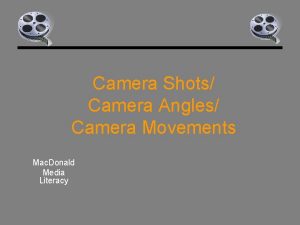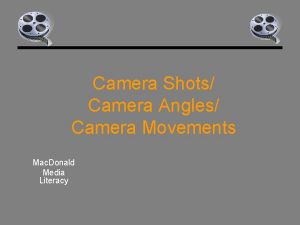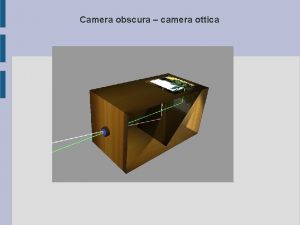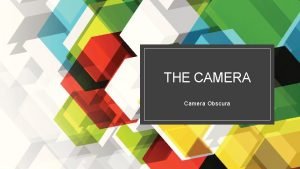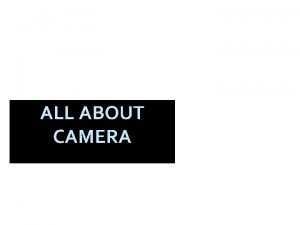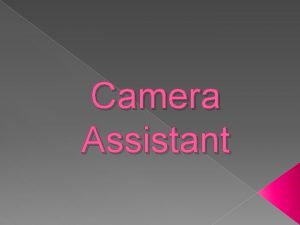Session Aim Introduction to DSLR camera technology Understanding





















- Slides: 21

Session Aim Introduction to DSLR camera technology Understanding THE EXPOSURE TRIANGLE required to shoot quality footage on a DSLR.

THE EXPOSURE TRIANGLE

Firstly… • YOUR SHUTTER SPEED ON THE DSLR SHOULD BE SET TO 50 WHEN SHOOTING VIDEO. • YOU CAN ADJUST THIS (BUT IT’S BEST NOT TO AT THIS STAGE IN YOUR FILM MAKING CAREER. THIS IS WHERE THE SHUTTER SPEED IS SHOWN AND YOU ADJUST IT WITH THE DIAL ON THE TOP OF CAMERA.

SO THAT’S THE FIRST SIDE OF THE TRIANGLE DEALT WITH…

Now side 2, APPERTURE How your DSLR works • Light focuses on sensor. • The intensity of light hitting the sensor (the exposure) is controlled by an iris in the lens. SENSOR

How your DSLR works Sensor converts light to a video signal. Without a light source it becomes harder and harder to create a good image, or achieve good exposure.

Exposure • The exposure to light hitting the sensor is controlled by the iris in the lens.

Aperture & Exposure • We call the exposure or iris the Aperture • Aperture is measured in F stops F 22 F 11 F 5. 6 F 2. 8 Each turn of the iris either doubles or halves the amount of light hitting The sensor in a camera

What does this mean? • If you are filming outside on a sunny day in order to get the correct exposure you are likely to have a stop of about F 11 or higher. The f stop is indicated on the LCD or in the viewfinder

• Alternatively if you are filming in less well lit environments you will need to open the aperture, allowing more light to hit the sensor to expose correctly This is where you will find the f. stop reading on your canon camera. It is adjusted by touching this and using the main dial on top of the camera.

By the way… Something else changes when you adjust the aperture… It changes what we call the depth of field This refers to the amount of space that remains sharp around your focus point The larger the F. stop number, the larger the depth of field

Examples of exposure Under exposed Correctly exposed Over exposed

So how do we fix this image? Which one…

And This Image. . ? Which one…

If adjusting the aperture does not fix the problem, then we move to the 3 rd side of the triangle ISO It stands for International Standards Organisation, but this does not tell you Anything about how it can help you correctly expose a shot

When you press the ISO button on top of the camera, this is what you will see.

The higher the number, the more sensitive to light the sensor becomes

You adjust the ISO by pressing here… Then use the dial to increase or decrease ISO setting.

BUT WHAT DOES INCREASING ISO DO TO THE IMAGE? • Adjust ISO too much adds NOISE to your image. Keep it as close to 100 as possible and don’t go over 1600/2000 if you can help it.

Remember… • You are creative people. Your best tool is… • And if it looks bad on the screen, it is your responsibility to adjust it, using the EXPOSURE TRIANGLE

To help, use your Exposure Meter • The meter tells you how over or under exposed you are. With this information you can now use your knowledge of the exposure triangle to get the perfect image. • Use this and you have not excuses for a poorly exposed image.
 What is iso dslr
What is iso dslr Learning targets helping students aim for understanding
Learning targets helping students aim for understanding Multi camera vs single camera
Multi camera vs single camera Camera movement
Camera movement Pill camera introduction
Pill camera introduction Touch screen technology history
Touch screen technology history Low voltage
Low voltage Introduction to semiconductor manufacturing technology
Introduction to semiconductor manufacturing technology Introduction to computer technology
Introduction to computer technology Discuss about information technology and e-business
Discuss about information technology and e-business Introduction to strategic hospitality technology investment
Introduction to strategic hospitality technology investment Introduction to information and communication technology
Introduction to information and communication technology What is tranduser
What is tranduser Science fusion introduction to science and technology
Science fusion introduction to science and technology Rover technology introduction
Rover technology introduction Introduction to information and communication technology
Introduction to information and communication technology Introduction to veterinary technology
Introduction to veterinary technology Introduction about technology in general
Introduction about technology in general Nti new technology introduction
Nti new technology introduction Introduction to information technology: your digital world
Introduction to information technology: your digital world Introduction to information technology: your digital world
Introduction to information technology: your digital world Peter steiner nude
Peter steiner nude
